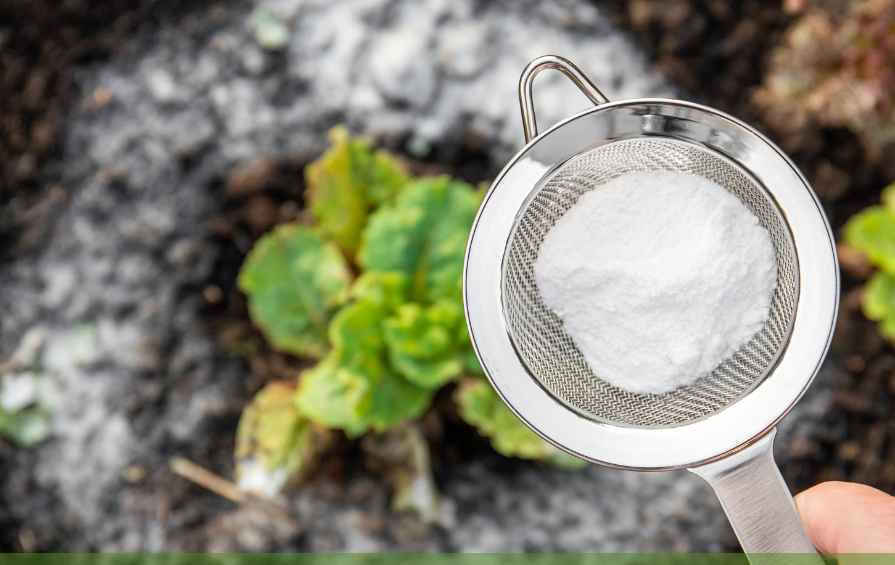
How to Use Baking Soda as Organic Fungicide for Your Garden
Baking soda, scientifically known as sodium bicarbonate, has long been used by gardeners as an effective and eco-friendly fungicide. It not only treats common fungal diseases such as powdery mildew but also prevents spore formation and can even repel some insects. Let’s explore how baking soda works as a fungicide, its benefits, disadvantages, and the best ways to apply it to keep your garden healthy.
Modes of Action and Benefits
Baking soda works by disrupting the ion balance inside fungal cells, causing them to collapse. When applied to plant surfaces, the alkaline residue it leaves behind neutralizes spores, preventing new fungal infections. It also doubles as a pest deterrent and has multiple benefits, such as:
- Cleans plant leaves and flowers
- Balances soil pH for tricky plants (e.g., cannabis)
- Sweetens the taste of tomatoes
- Repels insects like ants and caterpillars
Advantages and Disadvantages of Using Baking Soda in Your Garden
Advantages
- Eco-friendly and organic: Safe for the environment and minimizes chemical use.
- Cost-effective: Much cheaper than commercial fungicides.
- Prevents fungal diseases: Helps control powdery mildew and gray mold.
- EPA-approved: Registered for use against specific fungi.
Disadvantages
- Risk of burning plants: Sodium content can damage leaves and roots if applied improperly.
- Bicarbonate buildup: Repeated use may cause excess salts to accumulate in the soil, slowing plant growth.
- Water absorption issues: High salt levels can block cells, reducing water intake and potentially causing ion toxicity.
- Potential environmental impact: Too much baking soda in soil may disrupt nutrient balance.
When used correctly, baking soda remains a safe and effective option for garden care.
How to Make Baking Soda Fungicide Solutions
1. Simple Baking Soda Spray (Preventive Solution)
- Ingredients:
- 1 gallon of warm water
- 3 tablespoons of baking soda
- Instructions: Mix in a sprayer and apply to plants to prevent fungal diseases and deter insects.
2. Enhanced Baking Soda Solution for Better Protection
- Ingredients:
- 1 gallon of water
- 1 tablespoon baking soda
- 1 tablespoon vegetable oil
- 2 drops of dishwashing liquid
- Instructions: The oil helps kill insects, while the dishwashing liquid increases the mixture’s adhesion to plant surfaces.
This solution is especially helpful in treating powdery mildew during humid growing seasons.
3. Strong Neem Oil and Baking Soda Solution for Infested Plants
- Ingredients:
- 1 gallon water
- 2 tablespoons baking soda
- 1 tablespoon castile soap
- 2 tablespoons neem oil
- Instructions: Neem oil contains Azadirachtin and Nimbin, which enhance the fungicidal properties of baking soda. This solution works well on heavily infected plants and provides broader-spectrum pest control.
How and When to Apply Baking Soda Fungicide
- Test on a small patch first: Before spraying your entire garden, apply the solution to a small area to ensure it won’t harm your plants.
- Apply at dusk: Spraying during the heat of the day may scorch plant leaves. Choose the evening or cloudy days to prevent sunburn.
- Avoid rain: Ensure no rain is expected for at least 24 hours after application to allow the solution to stick and work effectively.
How Fungi Harm Plants
Fungi depend on plant nutrients for survival. They can travel through soil or air and settle on leaves or roots, where they absorb energy from the plant. As fungi spread, they weaken the plant, which may eventually collapse if left untreated.
Common fungal diseases like powdery mildew spread through spores and thrive in humid conditions, making early prevention critical to plant health.
Tips for Successful Baking Soda Usage
- Use baking soda as a preventative measure rather than waiting for infections.
- Combine it with other organic pest control methods for more effective results.
- Monitor salt levels in soil to avoid buildup, which can hinder plant growth over time.
- If an infestation is already present, apply stronger solutions with neem oil for a more comprehensive treatment.
Using baking soda as an organic fungicide is an affordable and eco-friendly way to keep your garden healthy. It prevents the formation of spores, treats existing fungal infections, and offers mild pest control. While there are some risks, such as plant damage from excess sodium, following proper guidelines ensures safe use. Apply baking soda solutions carefully, monitor soil conditions, and enjoy the benefits of a natural and effective garden remedy!
Always remember: Prevention is better than cure. With consistent care, baking soda can help you keep pests and fungal diseases at bay while nurturing a thriving, chemical-free garden.


